If you live where the snow flies, you've seen overconfident drivers blow by you on a snowy road and wondered if—and maybe even secretly hoped—they'd end up in a ditch. Whether they did or not, one thing's for sure: you don't want to be that person.
And you don't have to be. Years of driving and testing cars (and winter tires) in wintry conditions have taught us that following these nine simple winter-driving rules will greatly improve your chances of arriving at your destination calm, collected, comfortable, and—most important—safe.
1. Drive Super Smoothly
The key to safe driving in snow is being smooth with the steering wheel, accelerator, and brakes. Why? Jerky movements with the controls easily unstick tires that have a tenuous grip on the slippery road, so every turn of the wheel, push of the brakes, and movement of the throttle must
be deliberate, gentle, and gradual. Pretend there's a cup of scalding coffee in your lap and drive so as not to spill it.
2. Look Far Ahead
The slipperier it gets, the farther down the road you should look—and think. Anticipate what you'll need to do next. Slow way down for turns. Allow double the stopping distance when the road is wet, triple on snow, and even more on ice. Driving carefully and safely takes extra concentration.
3. Heed the Flashing Lights
How much traction do you actually have on a snowy road? One way to know before you get into trouble is to understand what one particular small, amber, flashing light in the instrument cluster means. (It's an outline of a car with squiggly lines behind it.) If you're accelerating in a straight line and this light is blinking, this is the stability-control system warning you that the wheels that drive the car are slipping.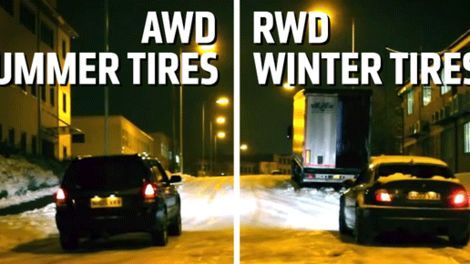 Heed it. And ease up on the accelerator so the tires regain their grip.
Heed it. And ease up on the accelerator so the tires regain their grip.
If you're turning and see a blinking amber light, this is also the stability-control system alerting you that the car is beginning to slide from your intended path. Again, ease back on the accelerator until you are no longer applying any throttle; this allows the car to regain grip. And do not accelerate aggressively when turning tight corners in town on snowy or slushy streets. Always ease into the accelerator so that nothing untoward happens abruptly.
4. Look Here!
If you feel your car beginning to skid, always, always, look where you want to go—not where the car is heading at that precise moment. Let your peripheral vision take care of whatever you're trying to avoid. Racing drivers know that you almost always end up where you are looking; that's one of the reasons they're so good at recovering from skids.
5. Deal with the Skids
Sooner or later you will hit a slick spot and get a queasy feeling in the pit of your stomach as your car starts to slide away from the direction in which you want to be heading. Skids, even big ones, can be managed, and you can bring the car back under full control in short order. First, don't panic—and don't stab the brakes! Instead, do the following:
For a front-wheel skid—where the front tires lose grip and the car turns in a wider arc than you expect—ease off the gas. In a beat or two, the front tires should regain traction. Then aim where you want to go as your traction returns.
For a rear-wheel skid—where the rear tires lose traction and you feel yourself beginning to spin out—quickly turn the steering wheel in the same direction that the rear is sliding. If, say, the rear is swinging to the left, turn the wheel to the left. Ease off the accelerator and stay off the brakes. As the rear wheels regain traction, steer back in the original direction.
Ease off the accelerator and stay off the brakes. As the rear wheels regain traction, steer back in the original direction.
No matter which type of skid you're experiencing, make sure you keep your wheels pointed in the direction you want to be going. And you can gently (remember point number one) use your brakes if you think you can recover without hitting anything. If an impact is imminent, don't be afraid to stand on the brake pedal as described in point number six.
6. Use Your Anti-Lock Brakes This Way
If all else fails and you need to stop as quickly as possible in snow or on ice, it's time to engage the help of your car's anti-lock-brake system (ABS). All new vehicles on the road today are equipped with anti-lock brakes, which use an onboard computer to optimize the car's braking in extreme conditions. If you are in a skid from which you can't recover or you need to avoid an obstacle—and your vehicle has ABS—push the brake pedal down hard, and don't let up. The computer will do the rest, keeping each wheel braking as aggressively as possible based on the available traction.
The computer will do the rest, keeping each wheel braking as aggressively as possible based on the available traction.
The amazing thing about ABS systems is that you can keep the brake pedal fully depressed while steering around obstacles; the computer will adjust the braking force at each wheel to allow you to maneuver while simultaneously slowing down. So in an emergency, don't just jam on the brakes—keep steering!
No safety system can ensure you avoid all accidents, but anti-lock brakes undoubtedly have saved many drivers from disaster. Note: most ABS systems cause the brake pedal to shudder when they activate to let you know they're working, so don't lift off the brakes when you feel this vibration; it's perfectly normal.
7.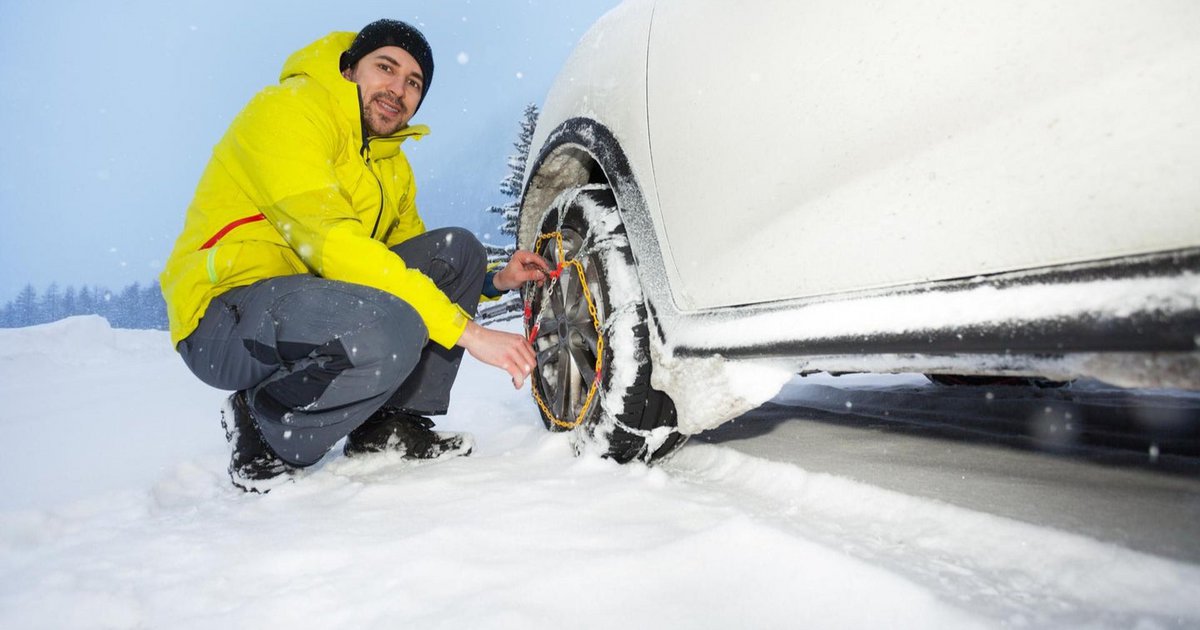 Constantly Assess Your Traction
Constantly Assess Your Traction
In the course of almost any snowy drive, your available traction will ebb and flow as road and weather conditions change along the route. In addition to the warning lights from the traction-control and stability-control systems, your anti-lock-brake system can help you assess how much grip you have on snow-covered roads. Here's how: Make sure there are no cars close to you, then apply the brakes gently for a second or two while driving in a straight line. If you feel the brake pedal chattering underfoot but detect minimal deceleration, the ABS system has activated, and you can rest assured the road beneath your tires is very slick. If you can slow down at a reasonable rate without ABS activating, you're on a more grippy surface. Once again, be sure there are no other cars around you that will be bothered by your unexpected slowing. Some anti-lock-brake systems will also flash a small amber light in the instrument cluster while ABS is working, so this can be another clue to low traction when you are brake-testing for grip.
Ezra Dyer|Car and Driver
8. Beware All-Wheel Drive
Vehicles equipped with all-wheel drive or four-wheel drive can lull you into a false sense of security on slick roads. They send their power to all four wheels rather than just two, which on slippery surfaces enables impressive, slip-free acceleration, especially from rest— which can make it feel as if you have much more traction than you actually do. Don't be fooled; these systems don't in any way improve your vehicle's ability to turn or stop in snowy conditions, so expect it to behave just like any other "normal" vehicle when you push on the brake pedal or turn the steering wheel. If you want to assess how much traction you have, you can employ the technique described in the previous step.
9. Fit Winter Tires
Technically this isn't a driving tip—it's a survival tip. That's because fitting a set of four winter tires (more commonly called "snow tires") is actually the best thing you can do to improve your safety margin and reduce your anxiety level on those awful snow-covered roads. Proper winter tires provide far more traction in snow, slush, and on ice than even the best set of all-season tires. We at Car and Driver test winter tires and install them on all of our long-term vehicles, and we have some top suggestions for your vehicle.
That's because fitting a set of four winter tires (more commonly called "snow tires") is actually the best thing you can do to improve your safety margin and reduce your anxiety level on those awful snow-covered roads. Proper winter tires provide far more traction in snow, slush, and on ice than even the best set of all-season tires. We at Car and Driver test winter tires and install them on all of our long-term vehicles, and we have some top suggestions for your vehicle.
10. Read the Road
Is the surface shiny or dull? Is there a uniform coating of powder, or bare spots interspersed with snow in the shade? Is the temperature cold enough to ensure crunchy, light, snow, or is it warm enough to create a slushy mess? While you can stop the car and get out to assess the surface if you're in doubt (and that's not a bad idea), you can learn a lot about available traction just by knowing what you're looking at. In general, shiny is bad, since that means either ice or water. Shady spots are deceptive, since dry pavement ahead of them can lead to a false sense of security. And dry snow is much better than slushy slop. Dry snow actually offers pretty good traction—think of the crunch beneath your boots—whereas slush behaves like deep water, with the tires riding up on top of it.
In general, shiny is bad, since that means either ice or water. Shady spots are deceptive, since dry pavement ahead of them can lead to a false sense of security. And dry snow is much better than slushy slop. Dry snow actually offers pretty good traction—think of the crunch beneath your boots—whereas slush behaves like deep water, with the tires riding up on top of it.
11. Plan Ahead
We already mentioned looking as far ahead as possible, and that's a good idea in general. But chances are, you're driving in familiar territory, so you can use that knowledge to your advantage, too. When you head down that hill, is there an equal climb on on the other side of the valley? Maybe conserve momentum for that. Is there an off-camber downhill left a quarter-mile away? You don't have to wait till you see it to slow down. If you know what's coming, drive like you're your own rally navigator and think a few steps ahead.
12.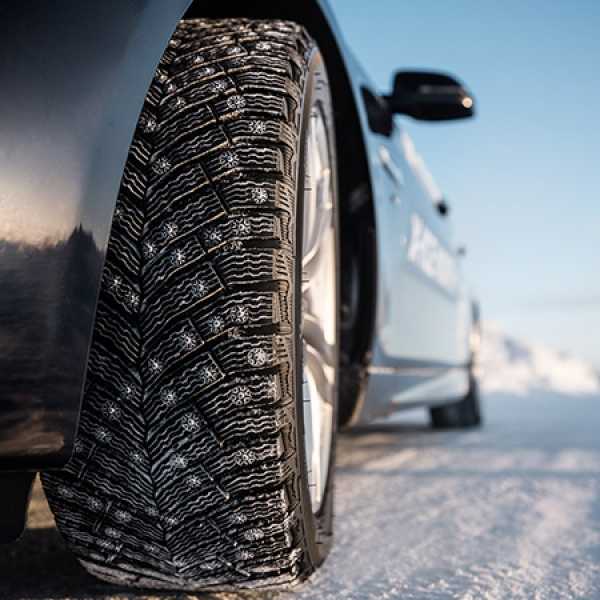 Carry the Right Supplies
Carry the Right Supplies
There've been times—usually when we're halfway through relocating a snowbank with our hands—that we've declared that we'd pay $500 for a snow shovel. The better solution is to throw one in your car before you leave, along with a bag of salt and a tow strap. If you're really concerned about your winter trek, you can get your tow eye ready, too. The tow eye screws into a threaded socket (usually behind a square plastic cover that pops out of the bumper) and can be used to attach a tow strap to vehicles that don't have a hitch or bumper-mounted tow hooks. The tow eye is usually under the rear cargo floor, with the spare tire, so if you think you need it, don't stack a quarter-cord of firewood back there before you set off.
This content is imported from OpenWeb. You may be able to find the same content in another format, or you may be able to find more information, at their web site.
Many drivers know winter tires are their best option for grip and slip in wintry conditions. Yet most drivers don’t care.
Yet most drivers don’t care.
A recent study by Michelin found that 72 percent of people who live in the Midwest agree that tires should be changed in winter, yet 80 percent of those people don’t bother to do it.
Advertisement
“People understand winter traction is important,” said Tom Carter, technical communications director for Michelin. “But they don’t want to go through the inconvenience of changing tires because it takes a certain level of expertise.”
It also takes a certain kind of hassle and expense to store and change the tires, even with garages and tire shops that offer such services. The proliferation of all-wheel-drive vehicles as well as all-season tires has dampened the perceived need for special winter tires.
Advertisement
AWD and four-wheel-drive make up 47 percent of all vehicles sold in America, and the take rate jumps to 65 percent when a vehicle is offered with AWD, according to Edmunds.com. Motorists who opt for those vehicles often think they have winter conditions covered without special tires.
“AWD is no substitute for winter tires,” said Ivan Drury, senior manager of industry analysis at Edmunds.com. “The main advantage of winter tires is the increased grip, which allows for performance increases while starting from a stop, cornering and braking.”
Drury went on to say he’d rather have winter tires on a front-wheel-drive or rear-wheel-drive vehicle than all-season tires on an AWD vehicle.
[ READ about which is best: AWD, 4WD and winter tires ]
[ READ about winter tires vs. all-season tires ]
[ READ how to get your car unstuck from snow ]
Carter argues the same point.
“Winter tires should be used in all four positions for starting, stopping and cornering.”
We get it. You’re not going to. We’re not going to, either. Blame Subaru. But what can you do?
Choose a good all-weather tire, which is an all-season tire with winter tire ratings. And keep some junk in the trunk to get you unstuck.
A good all-weather tire, Carter says, has a special certification from the U.S. Tire Manufacturers Association. The three-peak mountain snowflake (3PMSF) certification is branded on sidewalls based on snow testing originally designated only for winter tires. There are a handful of these on the market by the major players, including Hankook, Michelin, Goodyear and Toyo. Expect more to come and expect a higher price than other all-season tires.
Advertisement
Another less expensive option is getting a tire sock. These are essentially cloth or plastic snow chains you can store in that underused underfloor cargo space in the crossover. They average $70 to $140, and Consumer Reports found them to be effective but a pain to pull over the tire.
Perhaps the best option might be the oldest one in the book.
“Bag of sand,” Carter said. “Keep weight in your car if it’s light in the rear.”
Other items to keep handy for winter conditions include dedicated cellphone charger for the car, a collapsible shovel, jumper cables, a blanket and salt or a small piece of carpet to wedge under a spinning tire.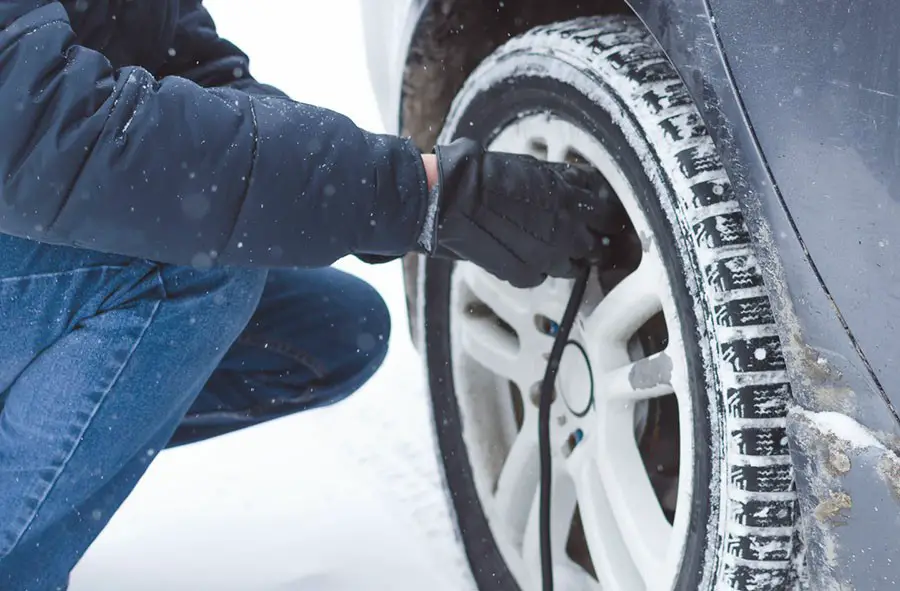 A first-aid kit never hurt anyone, either.
A first-aid kit never hurt anyone, either.
If you prefer to travel light, then drive patiently and avoid sudden movements in stopping, starting and turning. Or avoid the huge inconvenience with a small inconvenience, and get winter tires.
Advertisement
Twitter @DufferRobert
Winter tires provide a high level of safety. Good winter tires can provide the vehicle with excellent directional stability, good grip on icy or snowy roads.
Thanks to the presence of protectors, a high level of passage of the vehicle through the slush is ensured. The presence of water-removing grooves on the rubber provides excellent aquaplaning. nine0005
Driving without winter tires can be very distressing. Summer tires have a smooth tread pattern that provides excellent grip on the road.
But when using them in winter, slip on the road increases significantly. Summer tires have a poor rubber compound that performs well when used in the summer.
If it is used in winter, it will lose its qualities (traction, slip control, grip, etc.). nine0005
When using summer tires in winter, you can completely lose control of the vehicle. In order to increase the level of safety when driving a car in the winter, it is necessary to choose high-quality winter tires. The most common is rubber grades r15, r16, r17, r18.
Winter tires r15 have a symmetrical V-shaped tread pattern that provides good grip.
Due to the use of lamellas of different stiffness in the construction of this rubber, excellent directional stability of the vehicle is ensured. nine0005
All lamellas of this rubber have a different angle of inclination, which ensures their constant performance in any position of the wheel.
Thanks to the universal composition of the rubber compound, a high degree of wear resistance of these units is ensured.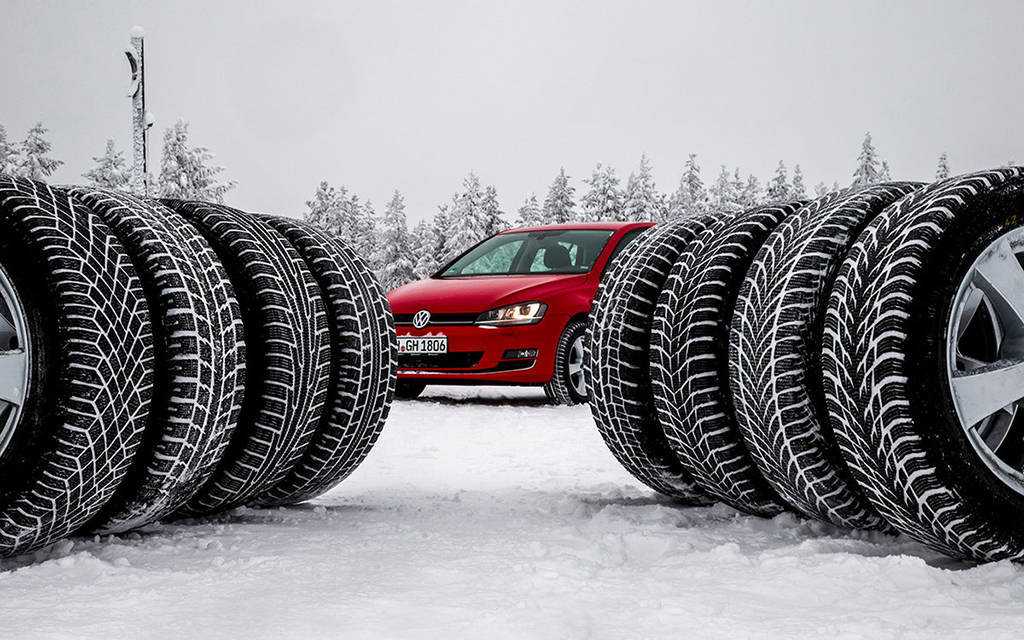
These products are designed to provide excellent handling on loose, packed snow and ice. With the help of these units, you can significantly save fuel in the winter.
Winter tires r16 are characterized by a high level of durability, reliability and wear resistance. Confident driving on winter roads is ensured by an elongated tread pattern in the shoulder and side areas of the tire.
Large footprint thanks to V-shaped tread pattern.
Excellent grip on winter roads is ensured by the use of a large number of snow lugs.
High-quality road grip is ensured by the presence of a large number of sipes. Due to the rigid structure of the tread, fast and high-quality braking of the car is ensured. nine0005
Redesigned sipe angle provides highly efficient vehicle handling. Protection against damage to the protective disc is provided by the presence of a protective rib in the shoulder area.
Thanks to the special composition of rubber compounds, the excellent performance of r17 tires is ensured. Reinforced grip is provided by a complex asymmetric tread pattern, the direction of which is carried out in different directions.
Reinforced grip is provided by a complex asymmetric tread pattern, the direction of which is carried out in different directions.
The tire's resistance is increased by the use of polymer fibers in three ply cords. The presence of a large number of edges on the tires provides them with a uniform and stable ride. nine0005
Optimized contact pressure is ensured by the use of computer technology in the development of this rubber.
Protection of rubber from various damages is provided due to the presence of additional blocks in the sidewall. Thanks to the special arrangement of the studs and tread blocks, excellent performance on wet, snowy or icy roads is ensured. The directional stability of the tire is maintained due to the presence of smooth transitions on its body. nine0005
R18 winter tires are produced using a special technology, which provides them with excellent strength characteristics. Good self-cleaning, excellent handling and directional stability of the tire is ensured by the presence of a directional tread pattern.
The reliability of the radial construction of these devices is ensured by the presence of three layers of strong cord. Confident driving on winter roads is ensured by an elongated tread pattern in the shoulder and side areas of the tire. The high level of reliability of the tire is ensured by the presence of a reinforced two-layer carcass. nine0005
Excellent grip on wet roads thanks to the use of silica during rubber production. The high level of elasticity of the tires is ensured by the unique composition of the rubber. Improved hydroplaning resistance is provided by the special formulation of the rubber compound.
In order to ensure a trouble-free and high-quality ride on a vehicle, it is necessary to purchase good winter tires. Our tire and wheel store provides a wide range of tires of various brands, which allows the buyer to make the right choice of unit. nine0005
We sell only original rubber from the manufacturer, which provides it with a sufficiently long service life. On the basis of our store there are constantly a variety of winter tires, which can significantly speed up the purchase process.
On the basis of our store there are constantly a variety of winter tires, which can significantly speed up the purchase process.
To purchase rubber, you just need to go to our website and fill out an order form. If you have any questions, you can ask them to our online consultants, who will not only answer them, but also help you choose the right winter tires, as well as place an order. We sell only high quality tires at the best prices. This is because we work directly with the manufacturer of these products. nine0005
The editors of the AvtoVzglyad portal do not call for experimenting when driving on the road in winter in a car shod in summer tires. But, you see, the circumstances are different. How to behave while driving if you suddenly had to find yourself in a similar situation?
Vyacheslav Vasilenko
Of course, driving a car with out-of-season tires is a lifelong lottery.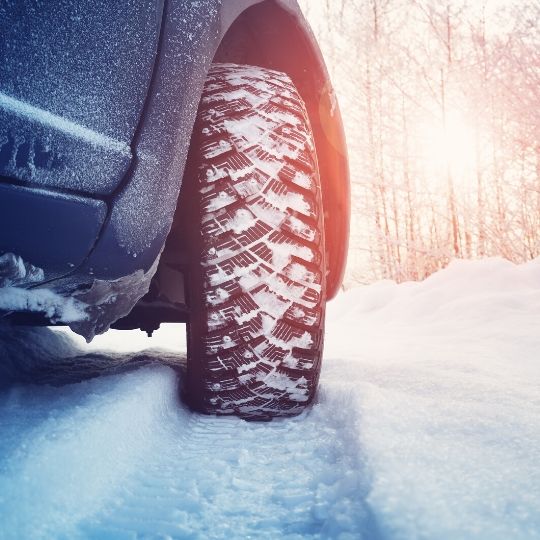 The probability of becoming the culprit of an accident, driving an "iron horse" in winter on summer tires, increases significantly. Still, because such tires are simply not adapted to low temperatures and the rubber compound loses tenacity when the thermometer mark approaches zero. Moreover, hardening, it ceases to be elastic, which negatively affects any maneuvers. And the point here is not even that there is snow, water porridge or ice on the road - the car may refuse to obey the driver even on asphalt, from useless steering exercises to “idle” pressing the brake. Therefore, it is not worth it to be like a neighbor who is sure that marketers came up with winter tires in order to make money on it, and it is still better to change the car at the first opportunity. nine0005
The probability of becoming the culprit of an accident, driving an "iron horse" in winter on summer tires, increases significantly. Still, because such tires are simply not adapted to low temperatures and the rubber compound loses tenacity when the thermometer mark approaches zero. Moreover, hardening, it ceases to be elastic, which negatively affects any maneuvers. And the point here is not even that there is snow, water porridge or ice on the road - the car may refuse to obey the driver even on asphalt, from useless steering exercises to “idle” pressing the brake. Therefore, it is not worth it to be like a neighbor who is sure that marketers came up with winter tires in order to make money on it, and it is still better to change the car at the first opportunity. nine0005
What to do in unforeseen cases, if bad weather played a cruel joke even before you changed the wheels? The "skating rinks" stuck to the icy surface, but for the life of me, you have to go! Call a taxi, a tow truck or contact a kamikaze neighbor? Not necessarily: you can get to your destination on your own, only this will require some skills.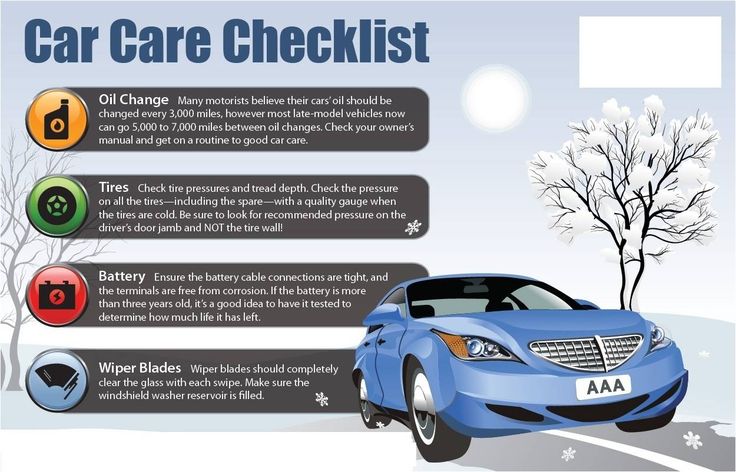 First of all, you need to move at low speed and significantly increased than usual, the distance to the vehicle in front. At the same time, the engine speed should be kept slightly above average, and the steering wheel should work smoothly and without sharp frills. Also smoothly and gas it up so that the car does not twitch, striving to break off the path. To brake, anticipating the situation on the roadway (and you need to monitor the situation with increased attention), it is necessary to cyclically press the pedal. Even with ABS, you should not press the brake all the way and hold it, trying in vain to catch the car in an uncontrolled slip. Oh, and don't forget to turn on the emergency lights. nine0005
First of all, you need to move at low speed and significantly increased than usual, the distance to the vehicle in front. At the same time, the engine speed should be kept slightly above average, and the steering wheel should work smoothly and without sharp frills. Also smoothly and gas it up so that the car does not twitch, striving to break off the path. To brake, anticipating the situation on the roadway (and you need to monitor the situation with increased attention), it is necessary to cyclically press the pedal. Even with ABS, you should not press the brake all the way and hold it, trying in vain to catch the car in an uncontrolled slip. Oh, and don't forget to turn on the emergency lights. nine0005
Even better, when decelerating, brake the engine by shifting to a lower gear. “Mechanika”, of course, in this case is an ideal option, but it is possible to stop without accident or go through an arc on the automatic gearbox. True, not all modern cars have automatic transmissions with manual modes, so you will have to slow down under a gentle release of gas.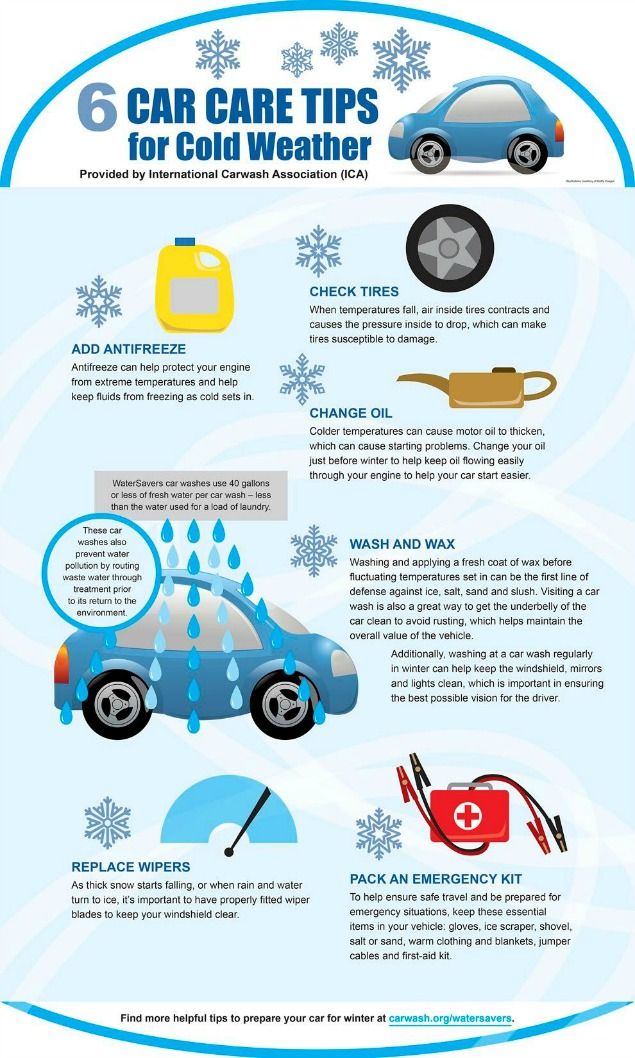 But we must not forget about the stock of engine thrust, which you must dose, not allowing the speed to fall, so that it is enough for safe maneuvering. nine0005
But we must not forget about the stock of engine thrust, which you must dose, not allowing the speed to fall, so that it is enough for safe maneuvering. nine0005
If the stern is thrown into a skid while driving a front-wheel drive machine, do not apply the brakes under any circumstances. Thus, you will provoke the car to uncontrolled behavior. To keep it in the trajectory, you need to act on the contrary - put pressure on the gas and turn the steering wheel in the direction of skidding. Just be careful not to overdo it. After twisting, there is a risk of skidding in the opposite direction. But if everything is done smoothly and without panic, the front axle itself will pull the rear axle out of the side slope. With rear-wheel drive, the situation is a little more complicated. To level a car that has floated in a rotary slide, you need to do almost the same thing as on the front drivers. The only exception is the absence of the need to press the gas - just take your foot off the pedal and continue to unscrew the steering wheel in the direction of skidding.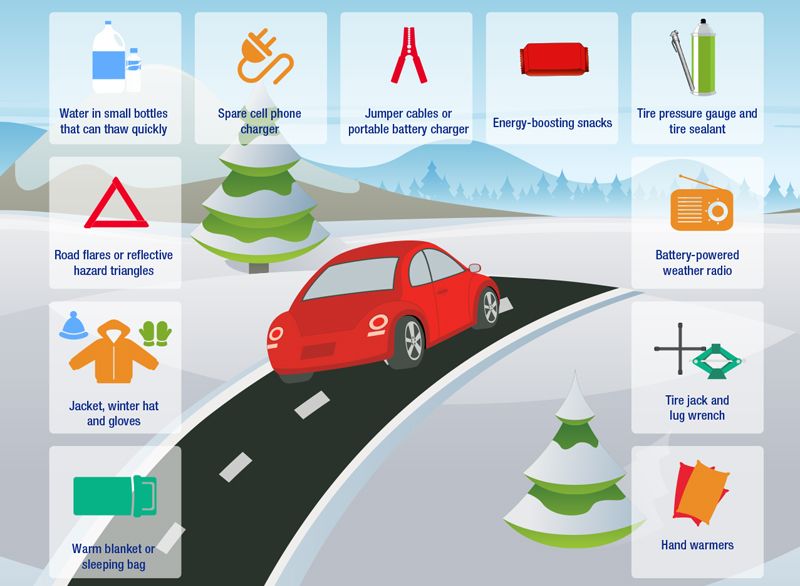 When pressing the "trigger", you, on the contrary, deprive the rear wheels of the braking effect and you will no longer have to count on the stabilization of the course. It is impossible to brake hysterically, as in the case of a front-wheel drive car, categorically - a complete loss of control over a vehicle that has started to float freely on the road is guaranteed. nine0005
When pressing the "trigger", you, on the contrary, deprive the rear wheels of the braking effect and you will no longer have to count on the stabilization of the course. It is impossible to brake hysterically, as in the case of a front-wheel drive car, categorically - a complete loss of control over a vehicle that has started to float freely on the road is guaranteed. nine0005
As for all drives, the fundamental factor here is the axle to which the greatest torque is transmitted. If this is the front, then we act according to the first principle, working with the steering wheel and gas, adjusting the degree of depression until it is completely withdrawn from the turn; if the back one - according to the second, dropping the gas, but dosing efforts when leveling the trajectory.
How to climb a slope covered with snow and ice? Tires can be slightly flattened. Less pressure, although not by much, will improve traction. It is not for nothing that drifters and other racers participating in competitions on soft ground resort to bleeding air from tires.